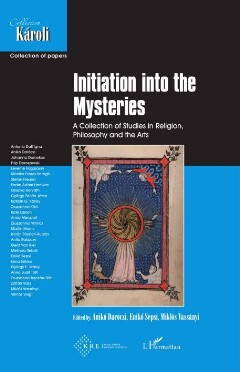Oldal 33 [33]
CYPRIAN’S AD DONATUM AS A MYSTAGOGIC
PROTREPTICUS
——~o » —_—_
STEFAN FREUND
ABSTRACT
In his early writing Ad Donatum, Cyprian addresses a fellow Christian and
narrates his own spiritual experiences before, during, and after his baptism.
On the one hand, the bishop of Carthage presents his initiation as a path
from the evil pagan world to pure and delightful Christianity. On the other
hand, the well-educated author uses many features of classical dialogue, for
example the topos of the locus amoenus in the beginning and the pleasures of
a symposium in the end. Thus, he builds a bridge from pagan literary culture,
which he sees clearly linked to the bad world, to the Christian mysteries of
initiation. Ad Donatum, therefore, often classified as an apologetic writing,
is, rather, a Christian mystagogic protrepticus. The author tries to give
an impression of how it feels to become a Christian. In order to do so, he uses
tools of ancient literary style and rhetoric. The aim of the present paper is
to show how Cyprian uses pagan patterns of expression to make Christian
mysteries understandable while keeping their secrets.
Cyprian came from an affluent pagan family in Carthage and was given
a traditional education in rhetoric. In 246 AD, he converted to Christianity and
was baptized. Before being elected bishop in 248 AD and before becoming one of
the most important representatives of Latin Christianity of pre-Constantinian
times, he wrote a brief work entitled “To Donatus” (Ad Donatum).' Donatus,
! For the text of Ad Donatum see Sancti Cypriani episcopi opera, pars Il, Ad Donatum,
De mortalitate, Ad Demetrianum, De opere et eleemosynis, De zelo et livore, ed. Manlio
Simonetti, De dominica oratione, De bono patientiae, ed. Claudio Moreschini, Turnhout,
Brepols, 1976; and Jean Molager, Cyprien de Carthage, A Donat et La vertu de patience.
Introduction, traduction et notes, Paris, Editions du Cerf, 1982. On the author in general:
Henneke Giilzow — Antonie Wlosok — Peter Lebrecht Schmidt, § 478 Caecilius Cyprianus
(qui et Thascius), in Klaus Sallmann (ed.), Die Literatur des Umbruchs. Von der römischen
+31 +
Daréczi-Sepsi-Vassänyi_Initiation_155x240.indb 31 6 2020.06.15. 11:04:10

